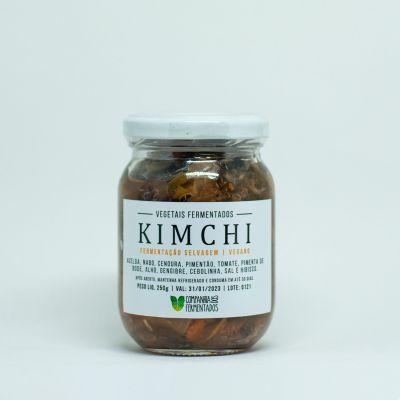
On benefits of fermented foods Much has already been said and written and we know that, especially when it comes to fermented vegetables, it would be good to introduce a certain amount on a regular basis in our diet.
Exploring the globe in search of similar foods it is not too difficult to come across kimchi, a sort of cortono made of fermented vegetables, with a pleasant and characteristic flavor and not too difficult to prepare at home.
Kimchi is a generic Korean term which contains many different fermented foods, exclusively vegetarian if the use of fish sauce is sometimes excluded.
The most used vegetables are the local Korean ones, however so universal that we can also find them here: leafy cabbages such as cap, cabbage and Chinese cabbage, together with roots similar to daikon are undoubtedly the main ingredients.
Next to them we find the burdock, celery, the coriander leaves, cucumber carrot aubergine, crescione,little bed andgarlic, the ginger, parsley knob mustard potato pumpkin soy, the shallot, the spinach sweet potato beet, tomato and, finally, many local plants, especially flowers, typical of Northeast Asia and unavailable to us.
Read also Korean cuisine, characteristics and main foods >>
How to make kimchi
Once cut, the vegetables are put into one pleasing paste made of salt, chilli, garlic, sugar and ginger. These finely processed ingredients are mixed together with water until they reach the density necessary to have a red paste with which we will mix our cut vegetables well before pressing them into glass jars.
It will then be time to let everything ferment. Fermentation must be checked daily, in the fridge. We just have to pay attention not to use a type of salt or a type of water that can inhibit the fermentation of our vegetables, for example a salt too rich in iodine or a water in which chlorinates are abundant.
If we pay attention to this, all the bacilli and lactobacilli responsible for fermentation will go to work creating a perfect army of microorganisms capable of producing numerous vitamins.
Kimchi: history and nutritional properties
Generally kimchi is a fermented dish that is used as a side dish, especially together with rice, but some people don't mind using it as a main dish. There are numerous variations, some of extremely ancient origin, when it was necessary to preserve and set aside food for the harsh winter and before the arrival of the chili at the hands of the Portuguese.
There are versions made of cabbage only or are of roots, others with different levels of spiciness, some with a marked umami flavor reminiscent of meat broth, others made with not quite ripe onions. Consuming kimchi means first of all bringing to your body a high amount of low calorie dietary fiber.
It is a food capable of making a large amount of vitamin C and vitamins of group A, plus vitamins of group B, iron and calcium thanks to lactobacillus kimchii, named in his honor.
Except for carotene, which decreases with storage time, all other nutrients increase greatly during fermentation until about the third week, after which a slow decrease begins.
Read also Miso, fermented and beneficial food >>


























